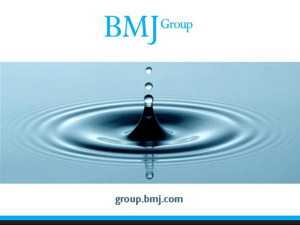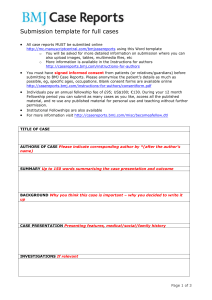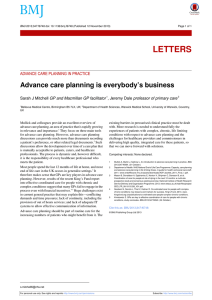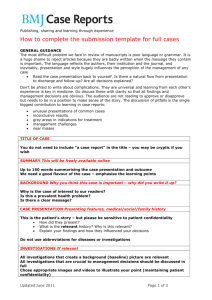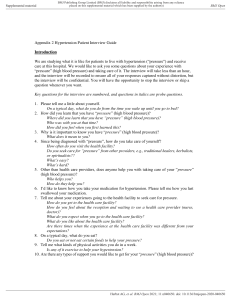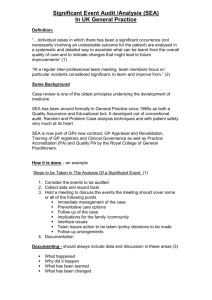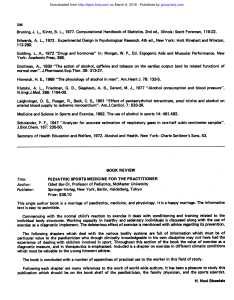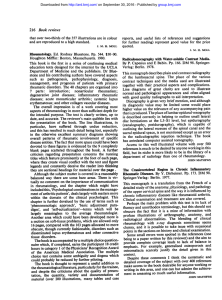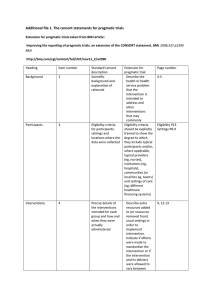7 Dec 2010 - Patient Safety - Ian Ferguson
advertisement
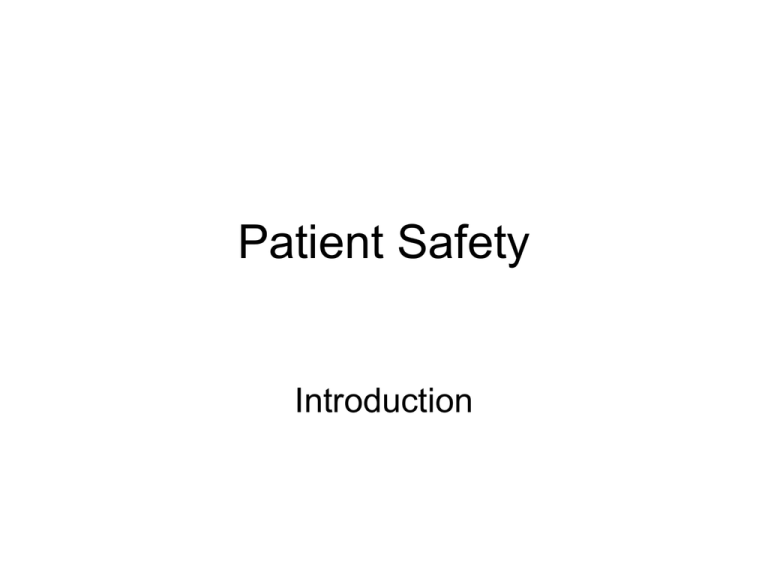
Patient Safety Introduction Abbreviation of “unit”—or not?. Lamont T et al. BMJ 2010;341:bmj.c5269 ©2010 by British Medical Journal Publishing Group Is it important ? ■ Study in England estimates that around 10% (900,000) patients admitted to NHS hospitals have experienced an adverse event (patient safety incident) ■ 50% could have been prevented ■ 33% led to moderate or greater disability or death. Vincent C et al BMJ 322:517-19 Seven steps to patient safety NPSA 2003 Harm in General Practice from Patient Safety Incidents • • • • UK Study of 10 GP Practices (2003) 940 errors in 2 weeks 75.6 per 1000 appointments Between 3% and 9% very serious involving 4% admission to hospital and 1% death Today’s Agenda • • • • • Intro Alison’s presentation Intro to SEA Tea Practical group work Significant Event analysis Do we need to do this ? • QOF • Appraisal • Revalidation Most errors are the result of systems rather than individuals and individual’s errors can be prevented by good systems. SEA’s can be the spotlight that shows the changes in the systems and processes that need to be changed Mike Pringle 2008 Seven stages of SEA • • • • • • • Awareness and Prioritisation Information Gathering Facilitated team based meeting SEA analysis Agree implement and monitor change Document it Share and Review Positive outcomes of SEA • • • • • • • • Celebration No action A learning need A learning point A conventional audit is required Immediate change A more in depth investigation required Sharing and learning SEA Exercise • What happened • Why did it happen • What has been learned • What has been changed or actioned
